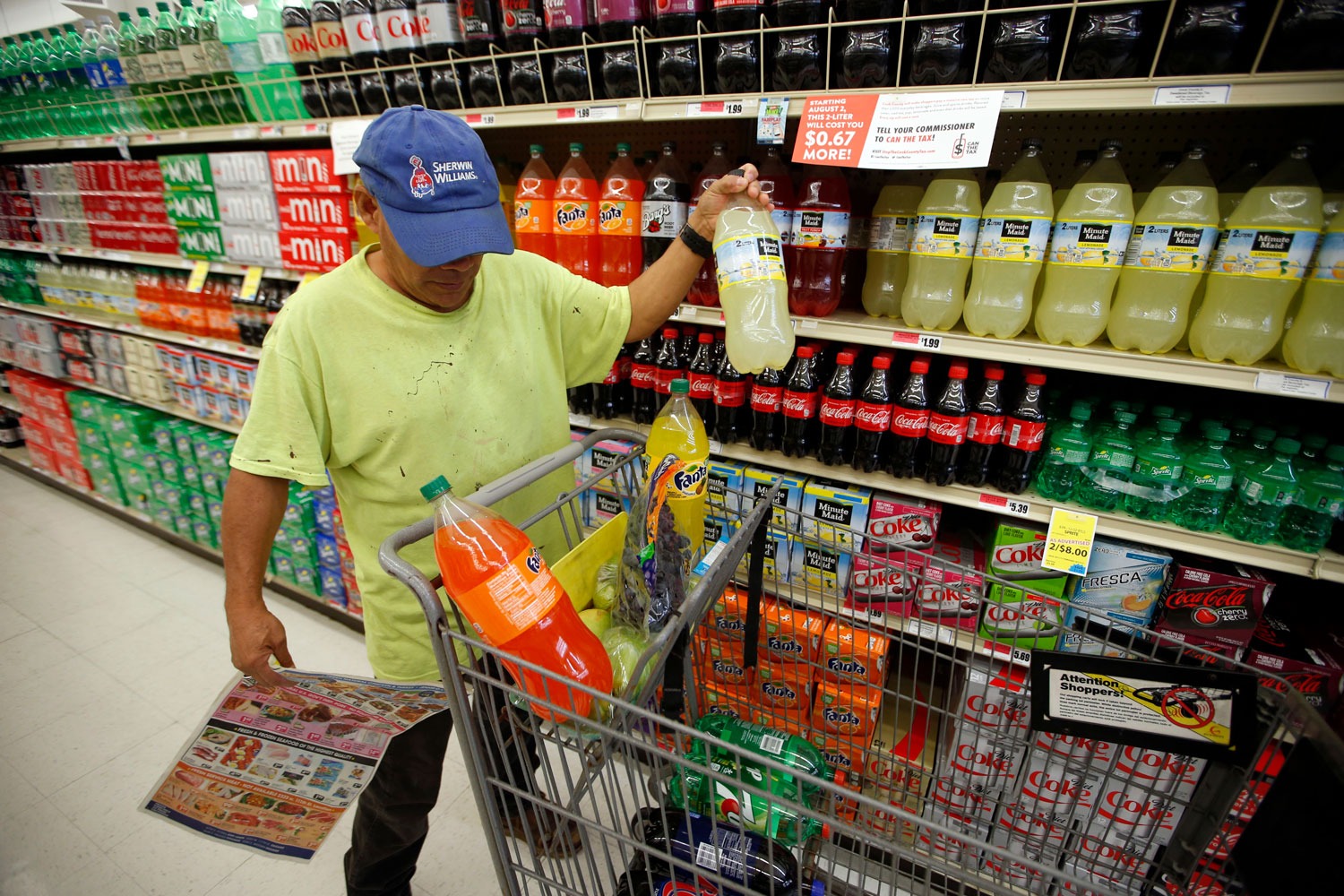Ben and Perry Feigenson were a pair of Russian Jewish immigrants who settled in Detroit in the early 20th Century. The brothers were bakers, but supplemented their income by bottling beer, mineral water, and soda water. The soda water, they thought, would be even more appealing if they flavored it with cake frosting. From the back of a wagon, they sold soda in three flavors: fruit punch, grape, and strawberry. The drinks were so popular the Feigensons built a bottling plant. They rebranded their drink as Faygo, and began calling the strawberry concoction “Red Pop,” after its color, and the sound the lids made when they were cracked off the bottle.
Faygo did not coin the term “pop” for a carbonated beverage — that goes back to the 19th Century — but the company helped popularize it here in the Midwest. Because of the difficulties of keeping the product fresh, Faygo was only sold in Michigan until the 1950s, but its Red Pop became a regional taste after the company developed a filtration system that purified its water.
“Faygo has been ahead of most any other company in insisting that we call it pop, and because of that, the Detroit area calls it ‘pop’ more frequently than any other part of the country,” said Joe Grimm, author of The Faygo Book, a company history.
On his website, popvssoda.com, cartographer Alan McConchie has collected more than 400,000 responses from all over the country to the question, “What do you call a soft drink?” On the East and West coasts, it’s “soda.” In the South, it’s “coke,” since Coca-Cola’s headquarters are in Atlanta. Here in the Midwest, it’s “pop.”
The word “pop” may in fact be the quintessential marker of Midwestern speech. On McConchie’s map, the pop zone is an almost perfect overlay of where the Great Lakes, or Inland North accent is spoken. In fact, the line separating East Coast soda drinkers from Midwestern pop drinkers is said to lie between exits 41 and 42 on the New York State Thruway. To the east, in Syracuse, they say “soda.” To the west, in Rochester, it’s “pop.”
It’s not just where it’s spoken that makes the word “pop” so Midwestern, but how it’s spoken. In your mind’s ear, hear the phrase “Gimme a cay-en of pahhhp” in a Chicago accent. (Or just say it out loud, if you have one.) The words “can” and “pop” elucidate the two most important vowel sounds in the Northern Cities Vowel Shift: the raised “a” and the fronted “o.”
While “pop” is the preferred term in Buffalo, Cleveland, Detroit, Chicago, and Minneapolis, there are outposts of soda drinkers deep inside the Midwestern “pop” zone — specifically in St. Louis and Milwaukee. According to Randy Vines, owner of the t-shirt shop STL Style and an expert on the St. Louis dialect, Vess Soda has always been the city’s beverage of choice. Even as Faygo became a Midwestern phenomenon, “the dominant local soft drink company in St. Louis, Vess strengthened its hold on the St. Louis market and never really allowed Faygo to penetrate the consumer consciousness here.”
We have an academic paper proving that Milwaukeeans say soda: “A Linguistic Study: ‘Soda’ and ‘Pop’ in Wisconsin and Minnesota,” by Heidi Sleep and Katie Thiel, two undergraduates at the University of Wisconsin-Stout. In 2007, Sleep and Thiel surveyed seven of their classmates, and concluded that “subjects from the state of Wisconsin tended to use the term ‘soda’ more frequently. Although the original hypothesis was that the terms would be used interchangeably by subjects from Wisconsin, ‘soda’ was the only term used by these subjects. Subjects that originated from the state of Minnesota consistently used the term ‘pop’ when referring to soft drinks.”
That’s not a big sample size, but it does conform with McConchie’s map. The paper, however, does not explain why Milwaukeeans say soda. Neither could a friend of mine who moved to Milwaukee from Detroit, the capital of “pop”-dom.
“Just a regional preference,” he said. “Other parts of Wisconsin say pop”— according to the study, and the map, “pop” is used in western Wisconsin — “but when I moved to Milwaukee 30 years ago, I had to adjust. Just like people here say ‘bakery’ to reference both a store and the things sold inside it; and people say ‘bubbler’ rather than drinking fountain.”
Or like they call $2.25 “tuna quarter,” ATMs “TYME Machine” and traffic signals “Stop and Go lights.” Our contrary neighbors on the other side of the Cheddar Curtain just don’t want to sound like FIBs from Illinois. Next time you’re in a restaurant or a convenience store up dere, ask for pop. Milwaukeeans may abuse the Midwestern English language, but we don’t have to enable them.
Related Content



